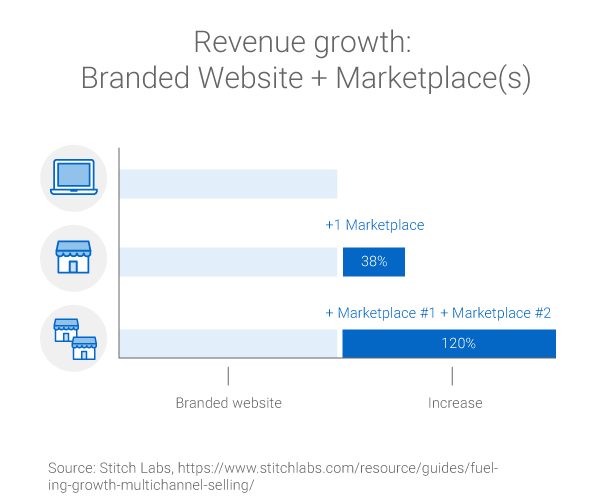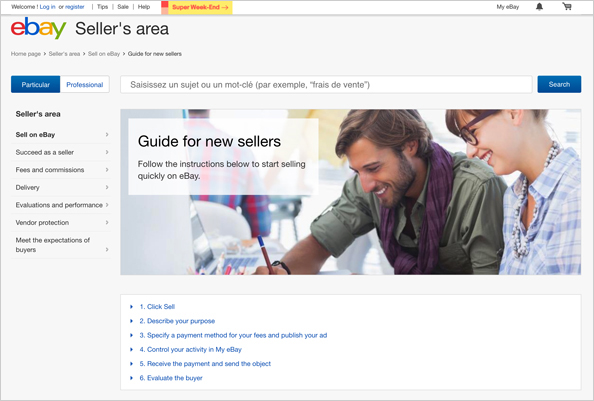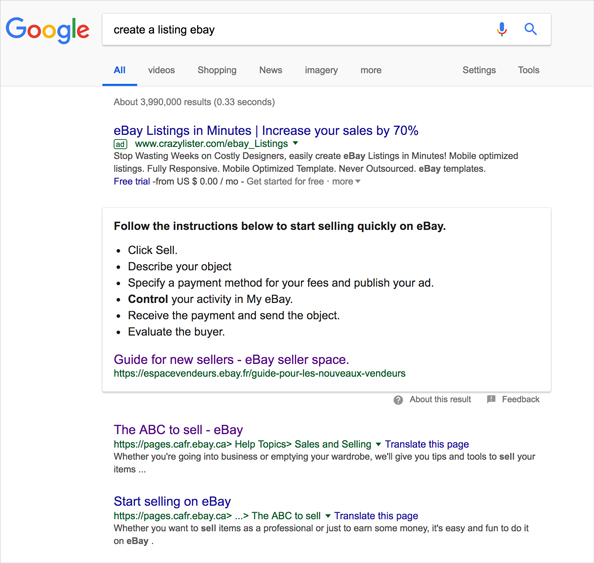Whether your business is big or small, to do well in the e-commerce landscape today, you need to reach customers where they are – not wait for them to find you. Today, 80 per cent of Canadians shop online, and 18 per cent of those shoppers make more than 25 online purchases per year. Most e-merchants try to attract Canadian online shoppers to their own website. This strategy is reasonable, but not optimal because retailers can reach even more consumers when they sell their goods in online marketplaces. By adding marketplaces as additional sales avenues, merchants can leverage well-established channels to reach a wider audience, and increase their sales.
Why shoppers prefer marketplaces
To understand the importance and convenience of online marketplaces for shoppers, think about how you shop for groceries. You most likely don’t go to a different shop for every item you need for the week. You may go to one or two specialty stores for items you love once in a while, but you probably visit a supermarket that carries an array of products that appeal to you for the bulk of your purchases.
An online marketplace is similar in the sense that it is basically a one-stop-shop for a practically unfathomable number of products. Your customers may prefer shopping in an online marketplace like Amazon, rather than your store’s more specialized website, because they can browse similar products from your competitors, and order other things that they need from other businesses and product categories in one shopping session.
Marketplaces also tend to facilitate better shipping rates, and customers can shop with confidence thanks to informative user reviews that may be missing from a product’s official website or online store. Where a marketplace may fall short, in comparison to a retailer’s website, is in product descriptions, which can be lacking, and customer support, where the customer service team likely won’t have specialized knowledge about one product.
Generating more sales through marketplaces
Online marketplaces, like eBay and Amazon, sell a ton of different products. In fact, your competitors may already be selling there. There’s good reason for that, as recent research has found that online merchants can increase their revenue by a whopping 120 per cent just by selling to as little as two additional marketplaces. Exactly how much incremental revenue a merchant can expect from each marketplace is difficult to predetermine, but they can generally count on a significant upswing in sales once they start selling in just one. This presents a particularly interesting opportunity during the holiday season.

Choosing the right marketplaces for your business
You may know that you want to sell in marketplaces, but may be unsure of where to start. Choosing the right marketplace for your products can be intimidating.
There are some key players in the marketplace landscape that you’ve probably heard of, like Amazon and Ebay, but where you decide to sell should really be determined by your products. For instance, if you sell a unique, handmade, or customizable product, Etsy may be the right fit for you as it specializes in such products. If you sell electronics or accessories for them, bigger marketplaces such as Amazon or Best Buy may be good options. Another one worth consideration is Newegg. They are a “smaller” marketplace in comparison, but they are more specialized in tech products, so their platform might help you reach the right customers. If you’re already selling in some of the bigger marketplaces, you could consider smaller ones as supplementary options. Ultimately the more marketplaces you sell in, the more people you will reach – and the more sales you may make.
Tip
Canada Post partners with marketplaces including Amazon, Ebay and Etsy, enabling merchants to print shipping labels directly from the platform, and with many shipping solution providers like ShipStation that can help merchants integrate orders, and print shipping labels, from multiple selling channels.
Master your operations and satisfy customers. Download the ultimate e-commerce ebook for merchants.
Get the e-bookWhat to consider before selling in marketplaces
Incorporating new marketplaces into your sales strategy may increase your reach and sales, but navigating them for the first time may not be second nature to you. These platforms generally do their best to make your setup seamless and easy to understand, but there are several considerations that you should keep in mind before you get started:
- Marketplace guidelines. Each marketplace has a different set of guidelines and requirements for selling on their platform. Merchants should do their research by consulting the website of each marketplace of interest to become familiar with what those are before signing up. They will dictate things like what products they can sell, how long the title should be, what the description of the product should look like, and what pictures they need to upload – just to name a few.
- How much it’ll cost you. Every marketplace calculates the fees that they charge merchants differently. For instance, they could charge a flat monthly fee, or a fee per listing – and everything in between. Merchants should take this additional cost into consideration and ensure that they have a clear understanding of what the additional cost will be. If you, the merchant, have a good understanding of what your margins are, you’ll be in a good position to take these fees into account. You can think of them as marketing costs, since they are a cost you are paying to acquire new customers.
- Payment options for shoppers. The marketplaces you sell in will ideally offer the same payment methods that you already do in your existing channels, such as credit card or PayPal. This will help you make an easier transition. Customers who navigate between your website and the marketplace will be pleased to be able to use the same payment types that they’re used to.
- Data analytics. This encompasses many different data considerations including inventory management, revenue and sales data, among others. Most online marketplaces will generate these numbers for you in the form of reports so you can conduct a thorough analysis of your data. Such analysis is essential to understanding how your business is performing in your marketplace of choice, what stock you have sold in the marketplace, etc.
- How to manage orders. If you sell on multiple platforms, like your own website plus one or more marketplaces (or just multiple marketplaces), having an efficient process in place to manage your orders is key. A good process can help you avoid over and underselling. With shipping software like ShipStation, you can also gain visibility on your inventory, and manage your orders across all channels. It will even enable you to easily integrate Canada Post as your delivery carrier of choice, and print shipping labels directly from the software platform.
Some merchants may be reluctant to make the leap to online marketplaces, largely because it may seem “too difficult” to get started. I hope you will take that leap because I have seen merchant success stories time after time. Both large and small businesses have the capacity to do very well by selling on multiple marketplaces. It helps them grow and scale their business.
How to get started
If you’re ready to sell your products in online marketplaces, it’s never been easier to get started. Most marketplaces make it very straightforward for merchants to register and sell online.

The easiest way to find out how to register for, and use, your desired marketplace is by simply Googling “how to create a listing on [insert marketplace name here]”. This will likely prove to be even be easier than reaching out to the marketplace customer support team, or even exploring the platform’s website. This is because Google does a great job of compiling the most relevant information for you, so you don’t have to track it down piece by piece.

When you’re ready to take the plunge into marketplace sales channels, all you need to do is pick one marketplace and start there. You will be able to transfer the knowledge you gain from one marketplace to the next, reach millions of shoppers, and potentially grow your business exponentially.
Read part 2: The best way to sell and manage products in online marketplaces
Robert Gilbreath, an e-commerce expert, is the former Vice President of Marketing and Partnerships at e-commerce shipping software provider ShipStation.
We’re here to help.
Canada Post’s e-commerce experts can help you make strategic choices for your online business.
Contact an expert